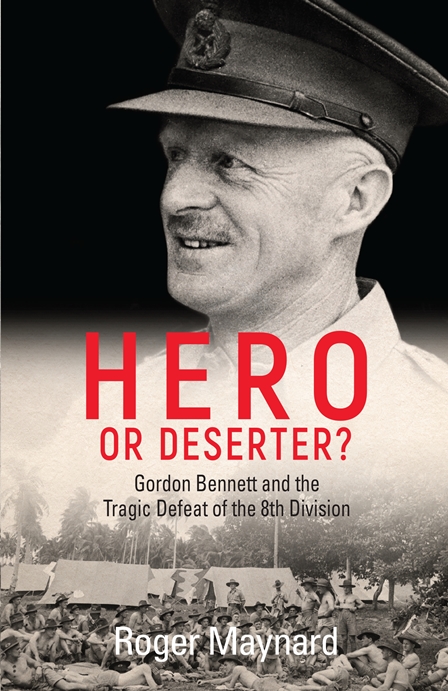Maynard has gone to great lengths to ensure he has written a well-balanced account of the exploits of the 8th Division and its commander from 1941 until 15th February 2017 when the Australian Ex-Prisoners of War Memorial was unveiled in Ballarat. The circumstances of Bennett’s departure from Singapore was the subject of both a Army Court of Enquiry in October 1945 and a Royal Commission that followed in November 1945 and both these events have been succinctly reported.

Paperback 384pp RRP: $34.99
In circumstances that no divisional commander would wish upon himself, Bennett was faced with having one of his three infantry brigade being split and moved to West Timor (Sparrow Force), Rabaul (Lark Force) and Ambon (Gull Force). He then had to confront the Japanese advance down the Malay Peninsula with no British contingency plans, defensive preparations, or air sea cover. The Division fought valiantly at Gemencheh-Gemas and Muar but had to fall back to the island of Singapore. Here the area of responsibility was so large that the troops were unable to defend the mangrove coastline because they were spread far too thinly. The result was the overunning of the Allies numerically superior force by Japanese infiltration through gaps. These events resulted in the Division being regarded as ‘a failure’ – which to this day it has had to wear from some quarters. The description of conditions in POW camps and the workforces does not pull any punches, but emphasises the camaraderie and stoic approach of the Australians during their incarceration.
Bennett, whilst a most competent and sound tactical commander admired by his men, had long been out favour with his military peers. After his return to Australia in March 1942, he was virtually sidelined in Western Australia by Blamey. The findings of the Enquiry and Royal Commission were based on three key aspects:
a. when does a combatant become a prisoner of war?;
b. that Bennett was answerable to the British commander, General Percival; and
c. a commander’s responsibility is to remain with his men. These points are argued in detail from both sides, and it is up to the reader to decide what action they would have taken in similar circumstances.
A well-compiled and complete account that is most readable. There are numerous first-hand accounts from members of the Division, and a telling comment from the Japanese War History. A generous collection of pertinent photographs have been included extending to the 75th Anniversary of the Fall of Singapore in February 2017. Eighteen pages of Endnotes, a bibliography and two-part index make reference easy for the reader.
This work encapsulates events that are still debated today, 75 years after they took place. A very worthwhile asset to any World War II military history collection.
Reviewed for RUSIV by Neville Taylor, August 2017
Contact Royal United Services Institute about this article.






